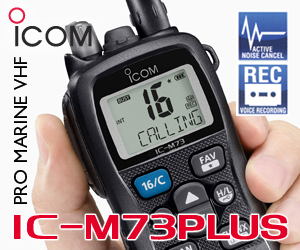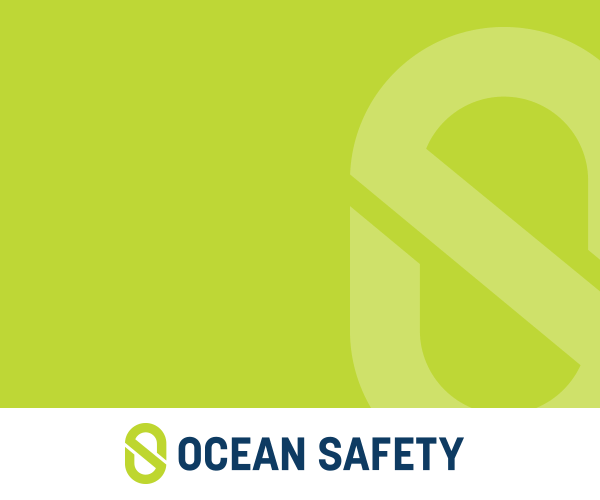Luffing (or not) |
Post Reply 
|
Page <12 |
| Author | |
Sam.Spoons 
Really should get out more 
Joined: 07 Mar 12 Location: Manchester UK Online Status: Offline Posts: 3401 |
 Post Options Post Options
 Quote Quote  Reply Reply
 Topic: Luffing (or not) Topic: Luffing (or not)Posted: 05 Mar 17 at 10:28am |
|
There was contact but no injury or damage. I was very clear about what I did because I made a point of running through it again in my mind immediately afterwards as the 'new rules' were very new at the time and, also at the time, I was still racing fairly seriously and had had a good knowledge of the rules prior to the changes.
Thanks
|
|
 |
|
Brass 
Really should get out more 
Joined: 24 Mar 08 Location: Australia Online Status: Offline Posts: 1151 |
 Post Options Post Options
 Quote Quote  Reply Reply
 Posted: 05 Mar 17 at 11:24am Posted: 05 Mar 17 at 11:24am |
Puts a somewhat different light on it. A is now facing some 'evidential difficulties' in asserting that, while changing course she gave B room to keep clear. How far away was B when you began to change course? Don't know. How long between when you began to change course and B began to respond? Don't know. After you initially changed course, B hardened up to keep clear to windward. When you changed course further what more could B have done to keep clear? Don't know. How long after you initially changed course did you begin to hold a straight course? ? How far away was B when you began to hold a straight course? Don't know How long were you on a straight course before contact occurred? ? At what point was it clear to you that B was not keeping clear? Don't know. What action did you then take to avoid contact? I hailed while facing away from a board behind my back.
Edited by Brass - 05 Mar 17 at 11:43am |
|
 |
|
Sam.Spoons 
Really should get out more 
Joined: 07 Mar 12 Location: Manchester UK Online Status: Offline Posts: 3401 |
 Post Options Post Options
 Quote Quote  Reply Reply
 Posted: 05 Mar 17 at 12:06pm Posted: 05 Mar 17 at 12:06pm |
|
Yup, considered all that, it's difficult for a windsurfer to see directly to windward while pumping onto the plane (accepted that cannot be an excuse). A made one change of course and hailed three times before contact. The time from the first hail to contact was at least 6 seconds suggesting that there must have been sufficient distance between the start of the luff and the point of contact for B to keep clear. In the absence of witnesses would the PC accept A's evidence of the time between the luff and contact? IIRC the PC can help the protestor to find the correct rule (as in this case the protestor's best guess was "he just sailed into me").
|
|
 |
|
Brass 
Really should get out more 
Joined: 24 Mar 08 Location: Australia Online Status: Offline Posts: 1151 |
 Post Options Post Options
 Quote Quote  Reply Reply
 Posted: 05 Mar 17 at 12:43pm Posted: 05 Mar 17 at 12:43pm |
There's no reason for a protest committee not to accept A's evidence about time it takes to hail three times. Generally speaking, protest committees should believe what parties and witnesses say in a hearing unless they have reason not to, but some protest committees wrongly automatically assume that each party is not to be trusted in evidence in their own favour. A could always invite them to look at their watches while he makes the hails in the protest room. Having established the time, the difficulty remains in establishing how far (in distance and/or time) B was when:
The protest committee must necessarily think that B, who had a direct sight line to A gives better evidence than A, in the absence of eyes in the back of A's head. You certainly don't need to correctly cite rule numbers (Case 22), or to specify the breach in 'correct rules-speak'. In this case, A is relying on rules 12 and 11 (clear ahead/astern then windward leeward). The transition, if there was one, is irrelevant because it's a rules only transition, not a right of way transition: A remains right of way throughout, even though the relevant rules instantaneously switches from rule 12 to rule 11 when B becomes overlapped to windward. If B is silly enough to say in the protest hearing that A luffed across his bow and admits that he didn't take any action to keep clear, and just sailed into A, then A should be off the hook for rule 16.1: A's contention will be that there was plenty of space for a board acting promptly to have kept clear, but that B didn't act promptly. But is B going to be that dumb? Edited by Brass - 05 Mar 17 at 9:37pm |
|
 |
|
Sam.Spoons 
Really should get out more 
Joined: 07 Mar 12 Location: Manchester UK Online Status: Offline Posts: 3401 |
 Post Options Post Options
 Quote Quote  Reply Reply
 Posted: 05 Mar 17 at 1:05pm Posted: 05 Mar 17 at 1:05pm |
|
Quite possibly in this case
 As I read it if the PC found against A using 16.1 then, in the absence of turns 14b has no meaning? Anyway as I said it was an academic question, said incident was many years ago but allowed me to give some form to the question. I think I understand rather better now that aspect of the current rules. Thanks again.
Edited by Sam.Spoons - 05 Mar 17 at 1:09pm |
|
 |
|
Brass 
Really should get out more 
Joined: 24 Mar 08 Location: Australia Online Status: Offline Posts: 1151 |
 Post Options Post Options
 Quote Quote  Reply Reply
 Posted: 05 Mar 17 at 9:50pm Posted: 05 Mar 17 at 9:50pm |
Here's how the conclusions might look
Taking a turns or other penalty has no effect on any of the above conclusions. All that taking a rule 44 penalty will get you is that, A, having taken an applicable penalty shall not be further penalised in accordance with rule 64.1( b ). On the other hand, if there is damage or injury, A is not exonerated, and, for insurance or other purposes, you have a finding that A broke two rules, one of which was failing to avoid a collision when it was reasonably possible to do so.
Edited by Brass - 05 Mar 17 at 10:20pm |
|
 |
|
Sam.Spoons 
Really should get out more 
Joined: 07 Mar 12 Location: Manchester UK Online Status: Offline Posts: 3401 |
 Post Options Post Options
 Quote Quote  Reply Reply
 Posted: 05 Mar 17 at 10:32pm Posted: 05 Mar 17 at 10:32pm |
|
If, as A, I had been involved in that protest I would have felt very hard done to (the assumption being that the PC accepted that 6 seconds elapsed between the first hail and contact). B having better visibility and 6 seconds to react should have taken action to keep clear or hailed to alert A that he was not keeping clear. The situation between two keel boats would be completely different, with more than one crewman there could be no argument about restricted visibility and I understand the need to discourage "playing bumper boats" but Yachts and Raceboards are rather different craft. The thing that concerns me is that most club sailors know the minimum of rules to get by and, where before the order of priority used to be Port/Starboard, Windward/Leeward and Clear Astern/Clear Ahead those have become subsidiary to "Room to Keep Clear". and it's all a bit like political correctness gone mad.......
|
|
 |
|
Brass 
Really should get out more 
Joined: 24 Mar 08 Location: Australia Online Status: Offline Posts: 1151 |
 Post Options Post Options
 Quote Quote  Reply Reply
 Posted: 06 Mar 17 at 12:00am Posted: 06 Mar 17 at 12:00am |
|
|
 |
|
Sam.Spoons 
Really should get out more 
Joined: 07 Mar 12 Location: Manchester UK Online Status: Offline Posts: 3401 |
 Post Options Post Options
 Quote Quote  Reply Reply
 Posted: 06 Mar 17 at 8:53am Posted: 06 Mar 17 at 8:53am |
|
Thank you for a thorough answer Brass I think you've explained everything very well. I'll put this one to bed now.
|
|
 |
|
Post Reply 
|
Page <12 |
| Forum Jump | Forum Permissions  You cannot post new topics in this forum You cannot reply to topics in this forum You cannot delete your posts in this forum You cannot edit your posts in this forum You cannot create polls in this forum You cannot vote in polls in this forum |
Bulletin Board Software by Web Wiz Forums® version 9.665y
Copyright ©2001-2010 Web Wiz
Change your personal settings, or read our privacy policy
Copyright ©2001-2010 Web Wiz
Change your personal settings, or read our privacy policy

























 Printable Version
Printable Version Delicious
Delicious Digg
Digg Facebook
Facebook Furl
Furl Google
Google MySpace
MySpace Newsvine
Newsvine reddit
reddit StumbleUpon
StumbleUpon Twitter
Twitter Windows Live
Windows Live Yahoo Bookmarks
Yahoo Bookmarks Topic Options
Topic Options